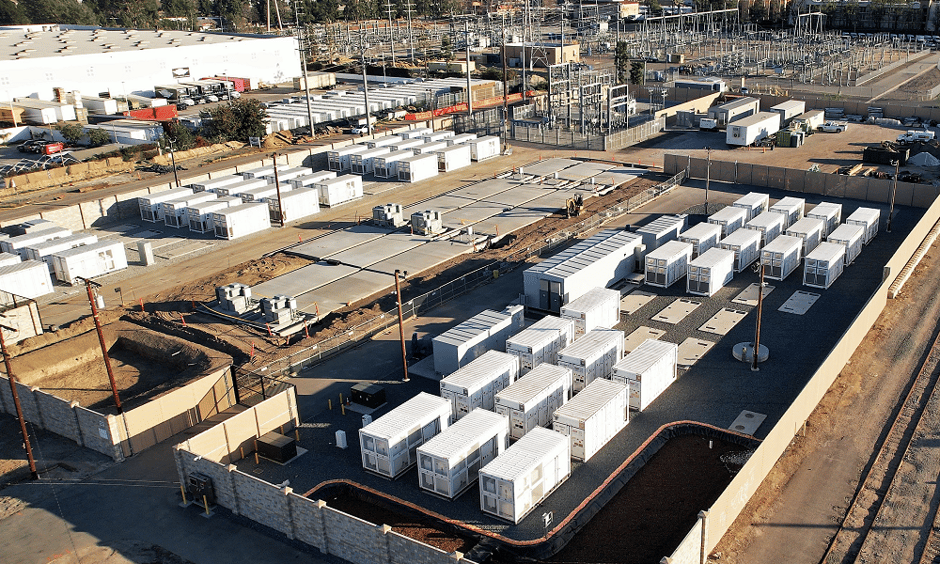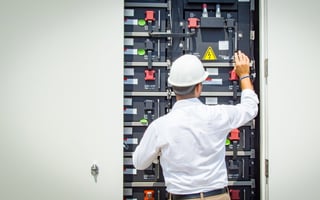Powered by Results: How to Build Energy Storage Projects that Deliver for Customers

With over half a century of experience in the energy industry, I know the importance of developing energy storage solutions that meet customers’ needs and deliver the results they are counting on.
There has never been a better time to be in the energy storage sector. Right now, Convergent Energy + Power (Convergent), a leading developer of energy storage solutions in North America, is engaging commercial and industrial clients facing an increase in energy costs, and utilities tasked with maintaining reliable, low-cost electricity rates low for customers. In addition, the climate crisis has created increasing urgency for businesses and utilities to look for more sustainable sources of power.
Last week, we announced our partnership with the team at Holyoke Gas and Electric (HG&E) in Massachusetts to develop a 5 MW/15 MWh utility-scale battery storage system with the goal of helping the utility migrate to a smarter delivery system that is expected to stabilize costs for customers amidst the volatile energy market. Part of what makes our partnership with HG&E successful is their team’s grasp of energy storage and the value it can provide to their utility. In fact, this will be HG&E’s third energy storage system. Talk about an early adopter!
Since joining Convergent a decade ago, my primary focus has been on the New England market. It is encouraging to work in electricity markets that value energy storage with state-sponsored programs and goals to accelerate the deployment of energy storage. Many organizations have even established pathways to Net Zero, making energy storage an even more important tool in the clean energy transition.
Taking the lessons I’ve learned over my career and the advancements in energy storage technology over the last decade, here are the components and steps that go into developing a successful energy storage solution, like the one we have announced with HG&E.
Lesson One: Understand Your Goals for an Energy Storage Solution
Building the “perfect” energy storage solution is not a simple task and requires several variables to line up in order to deliver an operationally and financially viable asset for customers. It is crucial to understand our customers and their goals. I always start by asking questions: How important is it for you to save money and lower costs? Do you want to support green strategies and lower greenhouse gas emissions? Are you looking to improve their electric reliability and/or resilience? Are you open to pairing your energy storage solution with solar PV? And how are you valuing all of these components?

Rendering of Convergent Energy + Power’s battery storage solution for HG&E.
Lesson Two: Location, Location, Location.
Once you understand your goals—and priorities—for an energy storage solution, we work with our customers to identify the ideal location for the system.
Naturally, we take into consideration the siting and interconnection requirements of a project. Unlike solar, which requires many acres of land, energy storage can easily be sited on less than a quarter-acre! Land arrangements, environmental reviews, and local permitting need to be understood as they can add costs and impact both the final system design and unintentionally extend the timeline to get a system in service. However, the flexibility that comes with the size of these projects means that energy storage can easily fit inside electric load pockets that need the most relief.
While energy storage delivers energy when discharging, it also needs energy when charging. The capability of the local distribution system and its compatibility with the delivery system’s operational design needs to be studied in detail. Interconnecting utilities often identify system upgrades through detailed engineering studies that either add costs or make a project financially unviable. Convergent reviews proposed locations and works with customers to find locations that minimize added costs and meet the stated goals and priorities of customers’ energy storage solutions.
Understanding how the electric system works and how energy storage integrates with it is fundamental to developing the right energy storage solution. An educated customer and an experienced and energy storage provider are a great team in finding the path to a successful energy storage deployment.
Lesson Three: Optimize Battery Storage to Maximize Value
As you may know, a utility-scale battery energy storage system is not unlike battery that you have in your smartphone. Utility-scale energy storage systems can have a life of over 20 years, but only if it is designed properly for the particular application. As we all know, the more we abuse our smartphone batteries, the sooner we need to recharge and eventually replace the battery or upgrade to the newest, and more expensive, model. It is the same with utility-scale battery energy storage.
Every energy storage solution developed by Convergent is specifically designed to deliver nameplate capacity throughout the life of the system and meet our customers’ specific needs. The number of charges and discharges affects battery life and performance. Here at Convergent, we evaluate your anticipated usage and, depending on its impact on the economics of the deal, we search for additional applications or revenue streams to lower the carrying cost of the system. Depending on the outcome, that can add more charges and discharges. Some of those added applications depend upon the energy market opportunities and, as we all know, energy and financial markets do change and impact investments.
Partnering with an experienced energy storage developer like Convergent, which finances and owns the system, involves some risk on both the part of Convergent and our customers but, when done right, everybody wins.
Lesson Four: The Importance of Data-Driven Dispatch
At Convergent, we rely upon data scientists and complex algorithms to model and manage our AI-powered energy storage intelligence, PEAK IQ®. By incorporating this expertise (I’d call it magic!) into our suite of services, we can dynamically operate and adapt our energy storage solutions to any outside influences that may impact the system over its lifetime. PEAK IQ, and our track record of results, gives us the confidence that our systems will perform for our customers as expected. It is not just the battery storage system, but its pairing with proprietary software that produces a successful storage outcome.
Lesson Five: Adapt to a Changing Grid
As the number of renewables increase on the grid, utilities will need to adapt—and energy storage is an ideal tool to meet utilities’ needs.
The ability of energy storage to discharge in milliseconds and react to the intermittency of the expanding solar and wind industry is necessary as energy generation shifts more towards renewables. For example, as consumers begin to favor heat pumps and electric heating and cooking, the demands on the delivery system will increase and energy storage can be there to pick up the slack instead of rebuilding miles of new transmission lines (an incredibly costly infrastructure undertaking). Not to mention the shift to electric vehicles and the challenge of managing charging times and locations and their impact on the delivery system.
These changes create paradigm shifts in energy generation and usage and shift the periods of high demand from 6:00 PM to 11:00 PM. When the sun goes down and winds die down, energy storage will save the day.
Lesson Six: The Time is Now to Connected With Convergent
Although Convergent makes bringing an energy storage system online as easy as possible for our customers, it doesn’t happen overnight. To put your utility in the best position for the future, we need to get started today.
Energy prices are rising, infrastructure is aging, and the climate crisis is driving the push towards renewable energy. Although energy markets will have to adapt to these changes, we feel confident that Convergent’s energy storage solutions can incorporate evolving applications and revenue to live up to our motto, “powered by results.” Again, our energy storage intelligence, PEAK IQ, is key to this success.
If you’re interested in learning more about how energy storage can benefit your utility, please contact me today for a free, customized evaluation.

Jim serves as Convergent’s Utility Project Executive and has worked with the company since 2012. Jim has nearly 50 years of expertise in engineering and operations in gas and electric systems, particularly within the utility sector.





